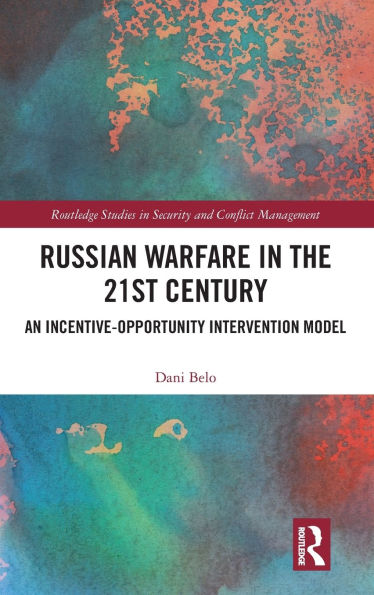Challenging conventional views, the book contends that Russia's use of varied gray zone tactics is influenced by both system-level incentives and domestic-level opportunities, which are integrated here into the Incentive-Opportunity Intervention (IOI) Model. The book examines case studies including Abkhazia, Crimea, Odesa, Kharkiv, and the Donbas, demonstrating how local ethnic-based movements and perceptions of regional retreat shape Moscow's coercive strategies. It highlights the reactive nature of Russia's tactics, driven by perceived threats to its protector role, and the significant role of ethnic and political dynamics in the region. The study underscores the importance of understanding these motivations for effective conflict resolution and suggests that protecting minority rights could mitigate such interventions. Policy recommendations emphasize the need for nuanced approaches that address both geopolitical and local dynamics. Ultimately, the book calls for future research to apply the IOI Model to other great powers, enhance the generalizability and applicability of the findings, and highlight the potential for multilateral coordination in promoting minority rights as a strategy for conflict prevention.
This book will be of much interest to students and policy practitioners working on Russian foreign policy, international security, Eastern European politics, and International Relations
Challenging conventional views, the book contends that Russia's use of varied gray zone tactics is influenced by both system-level incentives and domestic-level opportunities, which are integrated here into the Incentive-Opportunity Intervention (IOI) Model. The book examines case studies including Abkhazia, Crimea, Odesa, Kharkiv, and the Donbas, demonstrating how local ethnic-based movements and perceptions of regional retreat shape Moscow's coercive strategies. It highlights the reactive nature of Russia's tactics, driven by perceived threats to its protector role, and the significant role of ethnic and political dynamics in the region. The study underscores the importance of understanding these motivations for effective conflict resolution and suggests that protecting minority rights could mitigate such interventions. Policy recommendations emphasize the need for nuanced approaches that address both geopolitical and local dynamics. Ultimately, the book calls for future research to apply the IOI Model to other great powers, enhance the generalizability and applicability of the findings, and highlight the potential for multilateral coordination in promoting minority rights as a strategy for conflict prevention.
This book will be of much interest to students and policy practitioners working on Russian foreign policy, international security, Eastern European politics, and International Relations

Russian Warfare in the 21st Century: An Incentive-Opportunity Intervention Model
292
Russian Warfare in the 21st Century: An Incentive-Opportunity Intervention Model
292
Product Details
| ISBN-13: | 9781032759173 |
|---|---|
| Publisher: | Taylor & Francis |
| Publication date: | 07/18/2025 |
| Series: | Routledge Studies in Security and Conflict Management |
| Pages: | 292 |
| Product dimensions: | 6.12(w) x 9.19(h) x (d) |
